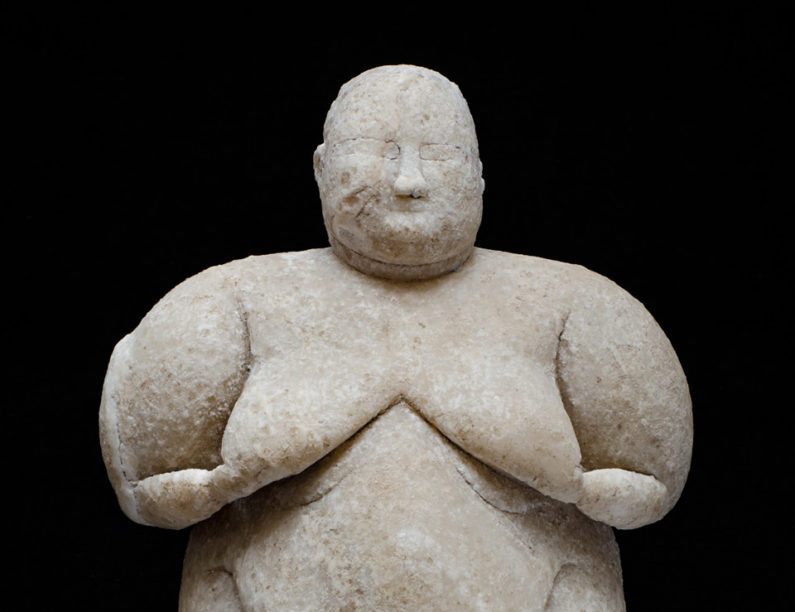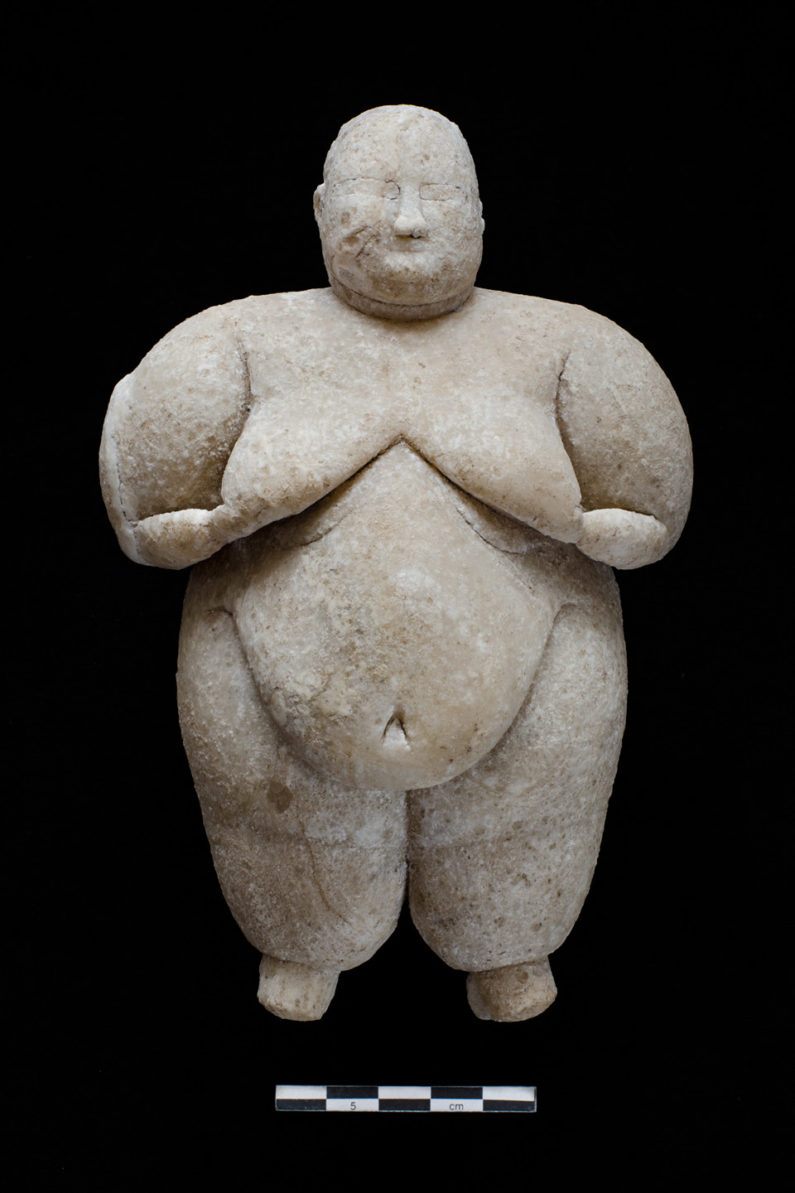Found: A Goddess Statue That’s 8,000 Years Old
It may have represented an elderly woman.

This statue is 8,000 years old. (Photo: Çatalhöyük Research Project)
As soon as archaeologists found this statue, they knew it was special.
It was found at a Neolithic site in Central Turkey, where it was carefully crafted sometime around 6,000 B.C. It’s 6.7 inches tall and 4.3 wide, and it weighs 2.2 pounds. It’s made of recrystallized limestone, and, Stanford University says, is distinguished by the fine lines of its “elaborate fat rolls,” its arms, separated from the torso, and the cut below the belly. To make such distinct lines would have required good tools and practiced hand.
At this site, Çatalhöyük, it’s not uncommon to find figures like this one, but they usually are made of clay and have not survived the millennia in such good condition. They’ve usually been associated with the figure of a fertility goddess, but Ian Hodder, the Stanford archaeologist leading the dig here thinks that they might have another significance as well.

The statue. (Photo: Çatalhöyük Research Project)
Çatalhöyük was home to thousands of people—perhaps as many as 10,000—and developed as an egalitarian society, without social class. As people aged, they gained respect and importance, and Hodder is in the camp of archaeologists who believe female figures, like this statue, represented elderly women, honoring their place in society.
This limestone statue came from a part of the site developed later in the city’s history, when its egalitarian character was fading and social stratification edging in. So it could have been an object that signified not just age but a higher social position.














Follow us on Twitter to get the latest on the world's hidden wonders.
Like us on Facebook to get the latest on the world's hidden wonders.
Follow us on Twitter Like us on Facebook